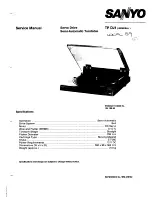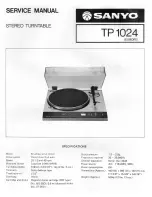
Title:
DICTUM HEALTH IDM100 MEDICAL TABLET INSTRUCTIONS FOR USE
DCO#:
00271
Document#:
870-00001-01
Originating Author:
E Keate
Modifying Author:
R. Massie
Date Created:
9/04/2018
Date Modified:
05/28/2020
Revision:
AR
Page
95 of 175
•
To ensure accurate results, clinicians can review the BTPS correction factor, which is recorded for
clinical reference along with the test results.
•
Patients may become light-headed, dizzy, or even faint during a spirometry test, so watch patients
closely. If they choose to stand during a procedure, keep a chair immediately behind them. If there is
any reason of concern, stop the test and take appropriate action.
•
Do not clean the interior of the Spiragrip and its tubing, or the Spiraflow. Trapped moisture can affect
accuracy. If the interior of the tubing of the Spiragrip becomes dirty, discard it and replace with a new
Spiragrip.
•
Inspect the Spiraflow, and discard if cracks, or damage, are found.
•
To prevent the spread of infection, properly discard the Spiraflow and Softclip set after single patient
use, and do not reuse, or clean, the disposable, single-use Spiraflow and Softclip sets.
•
Keep the Spiragrip handle clean and wipe down Spiragrip handle to disinfect after each patient. Patient
contact with contaminated equipment can spread infection.
•
Inspect the Spiragrip and its tubing for cracks, contamination, or damage before using. Replace
Spiragrip, if any part of it, including its tubing, is cracked, contaminated, or damaged.
•
Do not submerge the tubing or connector of the Spiragrip; ingress of liquid will impact performance.
•
Always check the interior of the Spiraflow to ensure that no foreign objects are present.
•
Disconnect and store the Spiragrip in a clean bag or container to prevent contamination.
•
Perform the Spirometer Calibration Check procedure in 26.5 of this document each testing day prior to
testing. Use the Spirometer only if it passes the Spirometer Calibration Check. Otherwise,
measurements could be inaccurate and a misdiagnosis could result.
•
Spiraflow flow transducers are manufactured to high precision and it is not necessary to calibrate the
spirometer system with each flow transducer lot separately.
Conditions likely to cause suboptimal or unrepeatable lung function results:
•
Chest or abdominal pain of any cause
•
Oral or facial pain exacerbated by a mouthpiece
•
Stress incontinence
•
Dementia or confused state
•
Any state, or condition, which may interfere with a patient performing the test properly
Patient instructions and best guidance:
•
To prepare patients for any spirometry test, explain the entire procedure for the type of effort you want
them to perform. Remind patients that the test is painless. It is recommended that you demonstrate at
least 1 effort for the patient, especially if the patient is younger or unfamiliar with the test. The accuracy
of a spirometry test is highly dependent on the patient's understanding and cooperation.
•
Coaching and encouragement helps the spirometry test, so be ready to coach and encourage the
patient with your “body language” and your words to ensure a good effort with reproducible results.
Instruct patients to do the following:
•
Loosen any tight articles of clothing that might constrict lung function, for example, a tight belt, tie, vest,
bra, girdle, or corset.
•
Remove any foreign objects from the mouth, including loose dentures.
•
The use of a nose clip is highly recommended.
•
Place lips and teeth around a new flow sensor transducer, sealing lips tightly around the flow sensor.
•
Keep tongue away from the flow sensor transducer to avoid blocking it.
•
Keep chin up, so as not to restrict the airway.
14.2 GLI Predictive Norms
















































